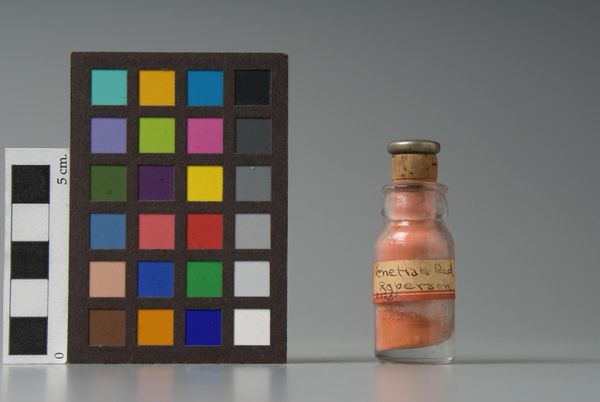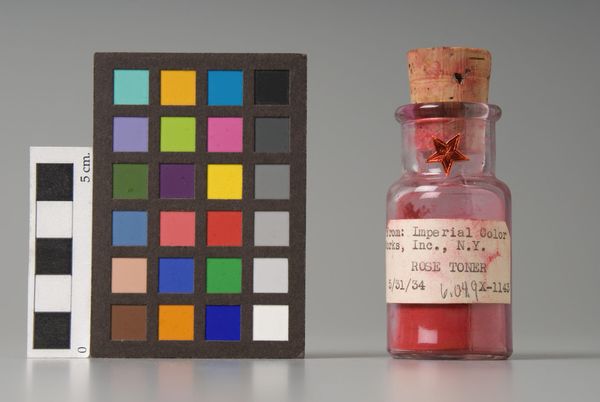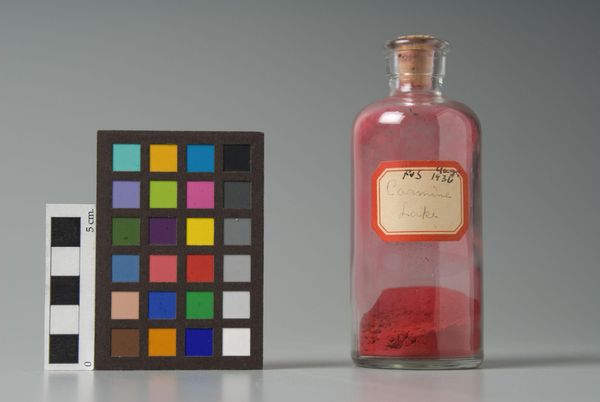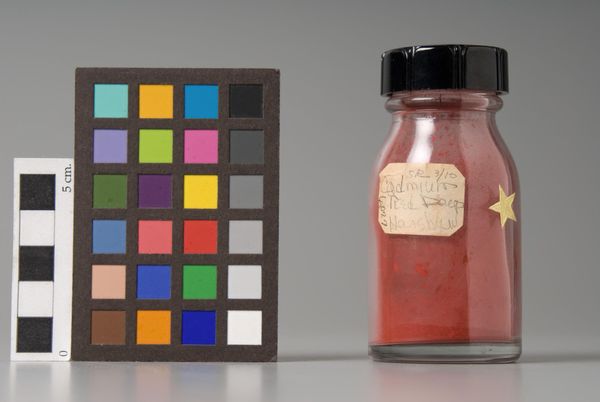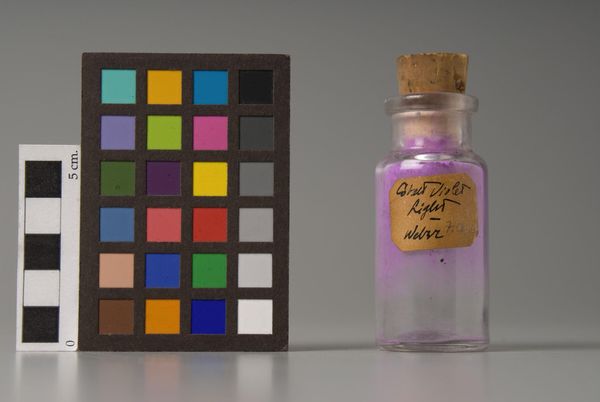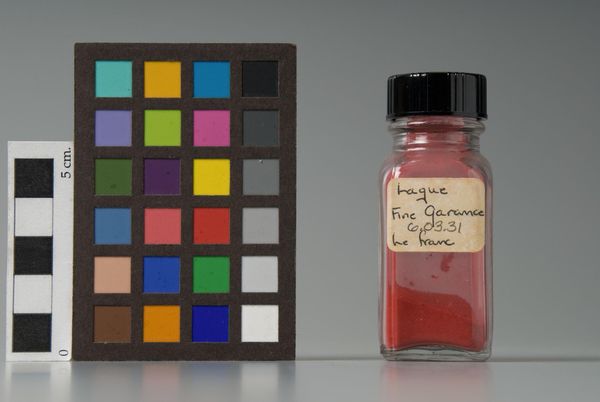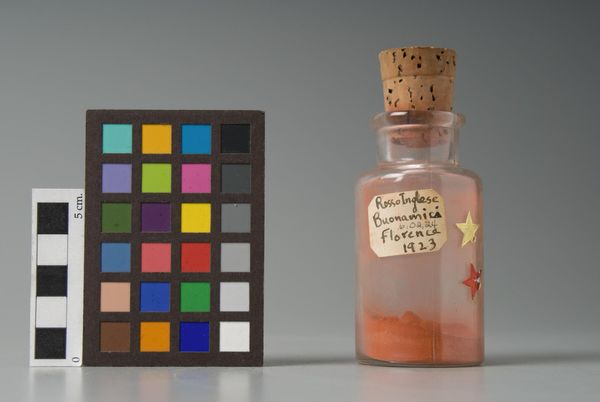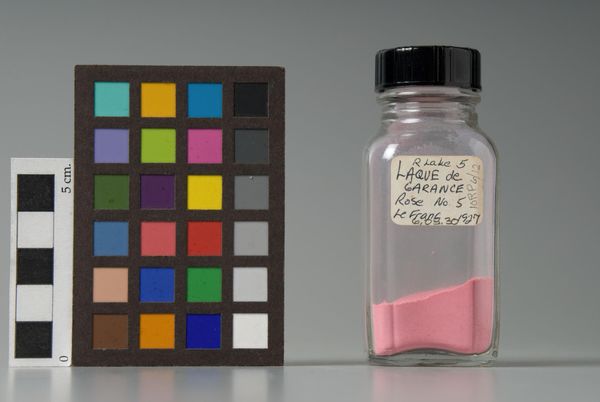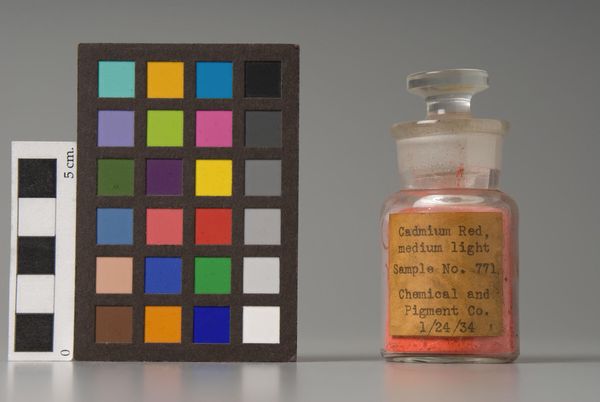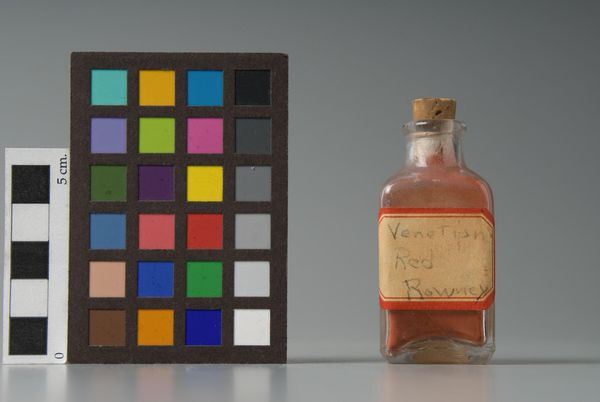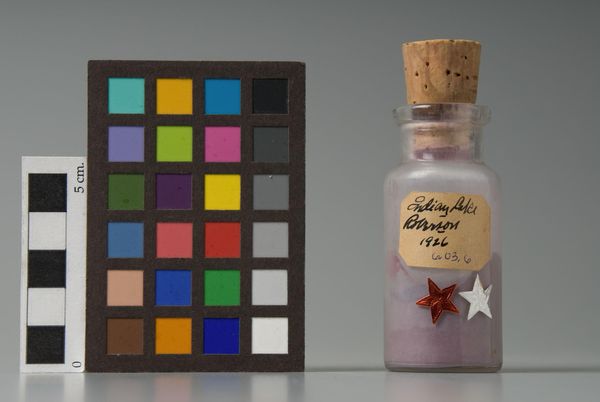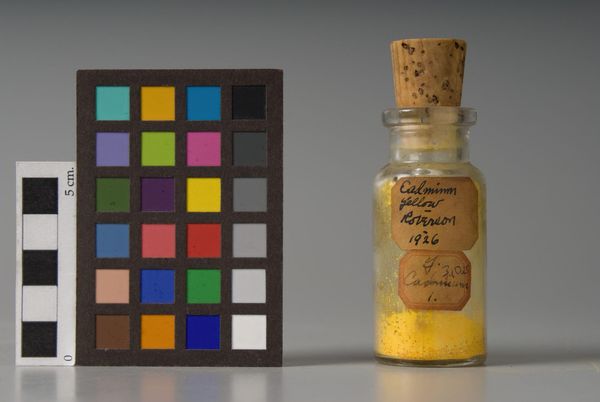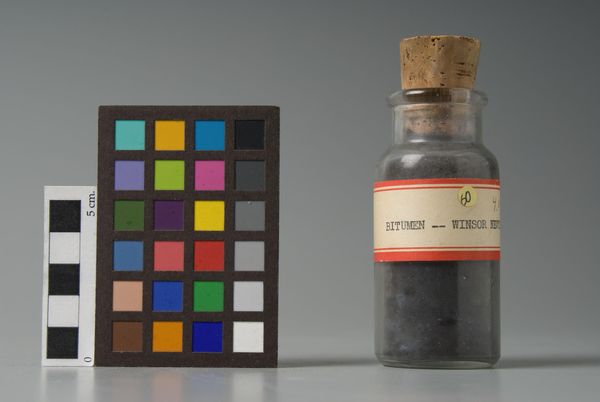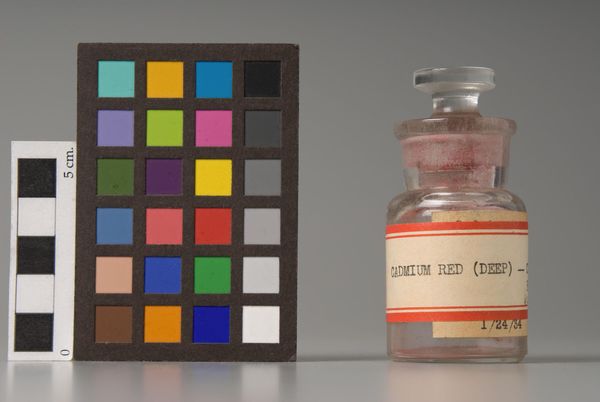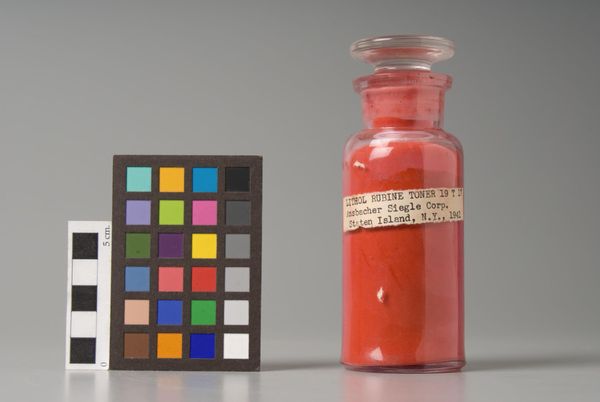
Copyright: CC0 1.0
Editor: Here we have "Alazirin," a pigment manufactured by F. Weber & Company. It looks like a vibrant, almost fluffy powder inside a small glass bottle. What can you tell us about its historical context? Curator: This isn't just about color; it's about the industrialization of art. Weber was a major supplier. Alizarin, a synthetic pigment, democratized access to vibrant reds, previously sourced organically and at great cost. What does it mean when art supplies become mass-produced commodities? Editor: So, this simple bottle hints at broader shifts in art and society? Curator: Precisely. The availability of new materials shaped artistic practices and even influenced art markets. Consider how impressionism emerged alongside pre-mixed paints in tubes. Editor: That's fascinating. I never thought about how the tools themselves could drive artistic movements. Curator: Indeed. It's a reminder that art is always intertwined with its material and socio-economic conditions.
Comments
No comments
Be the first to comment and join the conversation on the ultimate creative platform.
